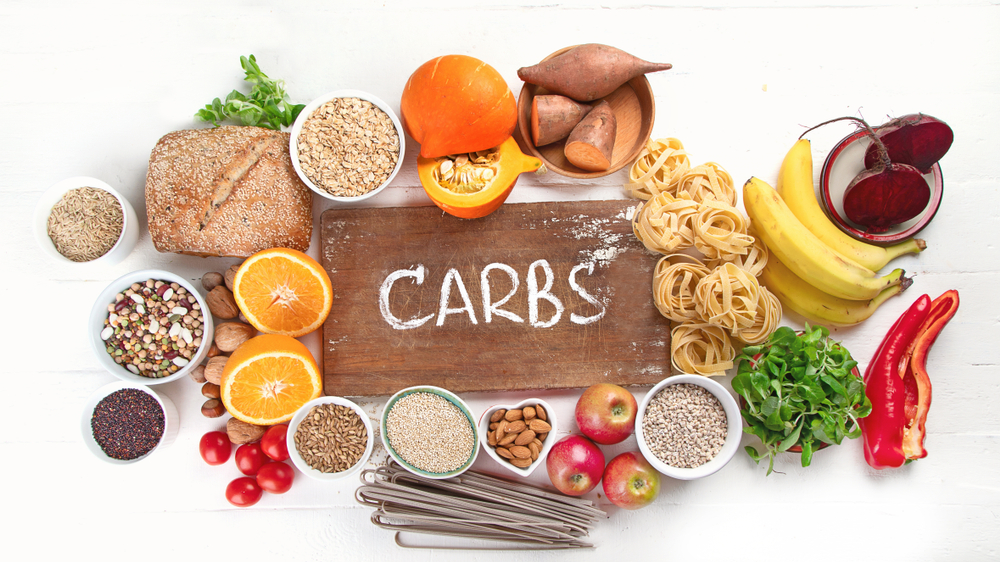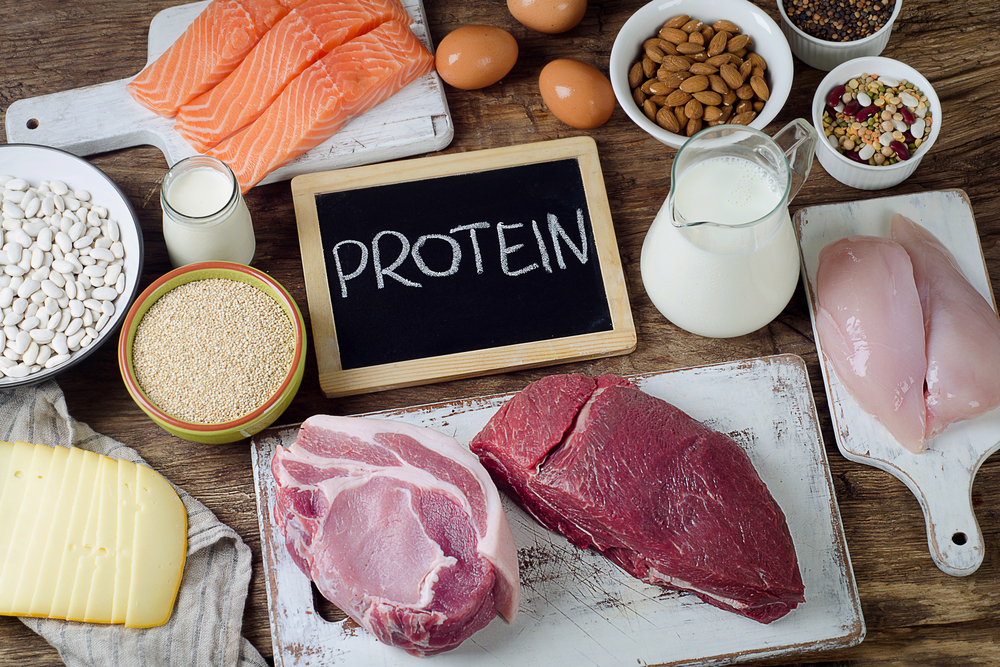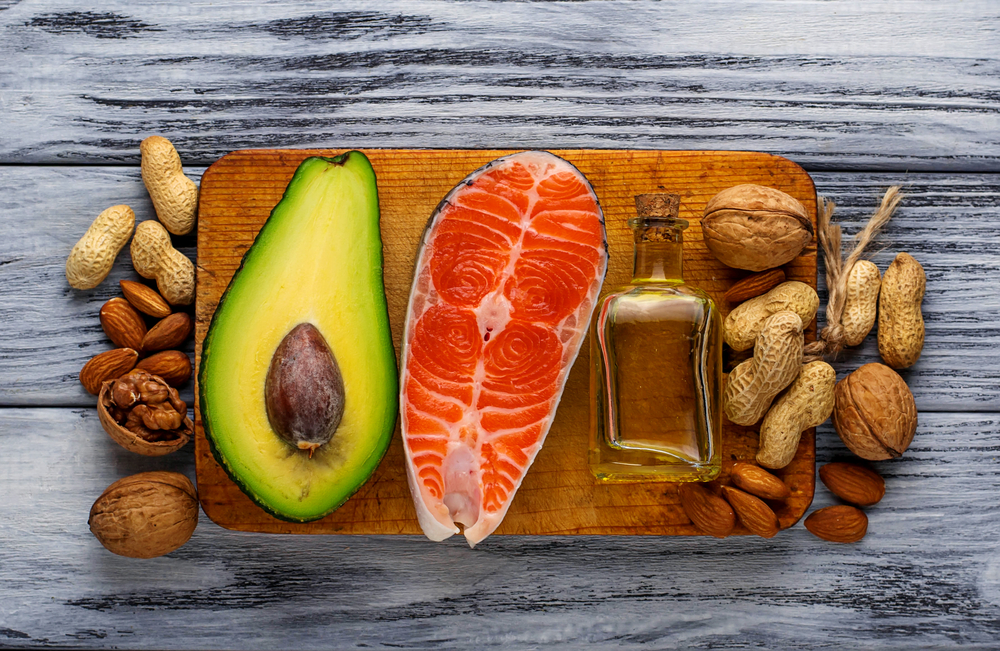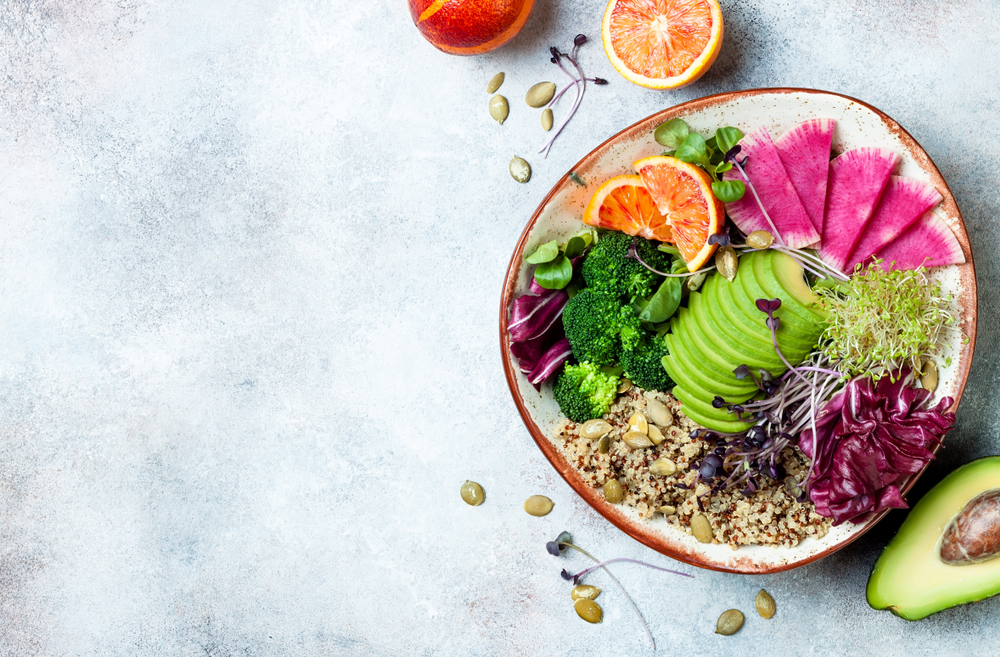DISCLAIMER: Always consult with a healthcare professional before starting any new routines, programs, or nutrition plans to ensure you receive the best medical advice and strategy for your specific individual needs.
So is Primal the answer? Or is it Keto? While there is no one-size-fits-all diet that works for all women, balancing macronutrients can be particularly beneficial once you hit menopause.
The Macro Diet, a popular approach to nutrition, does precisely that. Focusing on balancing fat, protein, and carbohydrates, the three main macronutrients the body needs to help improve the overall quality of your diet, supporting muscle growth, metabolic balance, weight management, and ultimately your health.
The Role of Menopause in Your Diet
 The end of monthly cycles marks a significant milestone in a woman’s life. In your 40s periods might be quite variable and your ovaries might not pop out an egg as regularly as they used to. At some point in your 50s, they will cease altogether, triggering a range of changes. Joints get achy and stiff, skin wrinkles and sags, hair grays, and thins, and the waist thickens. You find it difficult to stay or fall asleep, leaving you feeling rundown and tired.
The end of monthly cycles marks a significant milestone in a woman’s life. In your 40s periods might be quite variable and your ovaries might not pop out an egg as regularly as they used to. At some point in your 50s, they will cease altogether, triggering a range of changes. Joints get achy and stiff, skin wrinkles and sags, hair grays, and thins, and the waist thickens. You find it difficult to stay or fall asleep, leaving you feeling rundown and tired.
There is no denying that menopause is to blame for many of these changes. Yet, how you lived in your 30s and 40s and how well you take care of your body post-menopause has a major effect on how fit, healthy, and energetic you are. Along with physical activity and practicing emotional self-care, how much and what you eat is key to staying healthy once you cross the line into your 50s. As food is a topic of interest for many menopausal women and so is a topic of much debate, let’s talk about your dietary strategy and the role of macronutrients in it.
Why Are Macronutrients Important for Daily Diet?
Macronutrients are important because they provide the body with energy and essential nutrients needed for repair, growth, and movement. Protein, fat, and carbohydrates are nutrients that your body needs in large quantities to maintain its systems, organs, and tissues.
Carbohydrates
 Carbohydrates are the primary source of energy, fueling the central nervous system, heart muscle, kidneys, and brain. They also help regulate blood sugar levels, boost serotonin production, aid digestion, and promote heart health. Carbohydrates are found in a variety of foods, including fruits and vegetables, dairy products, and whole grains. They can be divided into two main categories, complex and simple.
Carbohydrates are the primary source of energy, fueling the central nervous system, heart muscle, kidneys, and brain. They also help regulate blood sugar levels, boost serotonin production, aid digestion, and promote heart health. Carbohydrates are found in a variety of foods, including fruits and vegetables, dairy products, and whole grains. They can be divided into two main categories, complex and simple.
Containing one or two molecules, simple carbs are quick to digest and absorb. They are found in foods such as soda, candy, corn syrup, and raw and brown sugar, which are a quick source of energy. Yet they are low in nutritional value, cause spikes in blood sugar levels, and promote short-term fullness, leading to overweight and chronic conditions such as hypertension and diabetes.
Unlike them, complex carbohydrates contain long chains of molecules, take longer to absorb, and supply more sustained energy. They are found in foods such as fruits, vegetables, legumes, and grains, which are high in vitamins, minerals, and fiber. The fiber in complex carbohydrates helps maintain your digestive system healthily, regulates bowel movements, and prevents constipation.
Foods high in complex carbs also supply a range of essential micronutrients that are important for optimal health. Lentils, beans, and whole grains, for example, are a rich source of vitamin B which support nail, hair, and skin health. Foods like lentils, brown rice, and quinoa are high in iron which supports the production of red blood cells and hemoglobin.
Magnesium which is found in seeds, nuts, whole grains, and fruits and veggies is essential for nerve, muscle, and bone health. And zinc in foods like nuts, seeds, and legumes supports protein and collagen synthesis, plays a role in wound healing and cell division, and aids your metabolism and immune function.
That said, carbohydrates fit into a healthy diet after 50 for a number of reasons. In midlife the risk for osteoporosis increases. As carbohydrates supply the body with glucose, they play an important role in bone cell metabolism. Research also suggests that the intake of carbohydrates, along with phosphorus and vitamin B6, supports mineral absorption and has a beneficial effect on bone mass.
Second, carbohydrates help regulate blood sugar, and cutting them can cause blood glucose to drop, resulting in weakness and irritability. Due to hormonal and physical changes, many postmenopausal women already experience irritability, low energy, and fatigue. Consuming complex carbohydrates like vegetables, fruits, and whole grains supplies the body with glucose, thus preventing blood sugar crashes which contribute to fatigue and irritability.
Protein
 Protein is an essential macronutrient for everyone, at every life stage, not just bodybuilders and athletes. It is made of amino acids which aid the synthesis of key hormones such as glucagon, insulin, and thyroid hormones. These, in turn, regulate metabolism, internal temperature, energy levels, and body weight. Amino acids also participate in the synthesis of neurotransmitters that regulate behavior, cognition, and mood.
Protein is an essential macronutrient for everyone, at every life stage, not just bodybuilders and athletes. It is made of amino acids which aid the synthesis of key hormones such as glucagon, insulin, and thyroid hormones. These, in turn, regulate metabolism, internal temperature, energy levels, and body weight. Amino acids also participate in the synthesis of neurotransmitters that regulate behavior, cognition, and mood.
In addition, amino acids are needed to produce antibodies and natural killers and T cells which defend the body against viruses and bacteria. With 20 amino acids that make proteins in our bodies, there are many other functions they play. Some help maintain a proper fluid and pH balance while others participate in the transportation and storage of nutrients. Protein also aids muscle repair and growth and gives structure and strength to our skin, nails, hair, cartilage, ligaments, and tendons.
As women transition to menopause, protein is important for a number of reasons, including metabolic, bone, and muscle health. Protein helps regulate blood sugar levels and prevent spikes, thus improving metabolic health. Crashes and spikes in glucose levels can also lead to type 2 diabetes which women at menopause are at an increased risk of.
With an increased risk of osteoporosis in postmenopausal women, protein plays an important role in collagen formation, calcium absorption, and growth hormone production, all of which support bone health.
Lastly, when women cross the line into their 50s, they tend to lose muscle strength and mass, which puts them at an increased risk for fractures. As protein participates in muscle synthesis, sufficient intake, combined with physical activity, helps maintain muscle strength and mass.
Types of Protein
 As different foods contain different combinations of amino acids, it is important to consume a variety of protein sources, including plant- and animal-based. Also called complete, animal-based proteins supply amino acids in sufficient quantities. They are found in a variety of foods, including dairy, eggs, poultry, fish, and meat. Plant-based sources include grains, seeds, nuts, lentils, and beans. They are called incomplete because they may lack certain amino acids. Yet, combining different sources, like wholegrain bread and humus, or beans and rice, creates complete proteins.
As different foods contain different combinations of amino acids, it is important to consume a variety of protein sources, including plant- and animal-based. Also called complete, animal-based proteins supply amino acids in sufficient quantities. They are found in a variety of foods, including dairy, eggs, poultry, fish, and meat. Plant-based sources include grains, seeds, nuts, lentils, and beans. They are called incomplete because they may lack certain amino acids. Yet, combining different sources, like wholegrain bread and humus, or beans and rice, creates complete proteins.
In addition to the completeness, protein sources have different nutrient densities. Lentils and beans are rich in vitamins and minerals while seafood and fish supply omega-3 fatty acids.
While all protein sources supply essential nutrients, there are some foods that are best to limit or avoid altogether. These include fried meats such as fish and chicken which contain unhealthy fats. Processed meats, including sausage, bacon, and hot dogs are high in preservatives, saturated fat, and sodium and should be avoided. Full-fat dairy products such as butter, cheese, and whole milk are also high in saturated fat which increases your risk of heart disease and stroke.
Fats
 Consuming healthy facts is essential for several reasons, including nutrient absorption, hormone production, and brain health. Fats enable the body to absorb essential micronutrients such as vitamins K, E, D, and A which play a role in many processes, including coagulation, immune function, and bone and vision health.
Consuming healthy facts is essential for several reasons, including nutrient absorption, hormone production, and brain health. Fats enable the body to absorb essential micronutrients such as vitamins K, E, D, and A which play a role in many processes, including coagulation, immune function, and bone and vision health.
Fats are also needed for hormone production, including insulin, aldosterone, thyroxine, and estrogen. These hormones regulate glucose, blood pressure, and metabolism and support reproductive health. As about 60% of the brain is made up of fat, including omega-3 and omega-6, consuming healthy sources of fat supports cognitive health and proper brain functioning.
Lastly, consuming healthy fats lowers cholesterol levels and the risk of peripheral arterial disease, stroke, and heart attack.
Why Are Healthy Fats Important After Menopause?
 First, postmenopausal women are at risk of decline in cognitive function, including domains such as verbal and working memory, processing speed, and attention. Consuming foods that are high in healthy fat, such as nuts and fatty fish supports brain health and helps prevent cognitive decline.
First, postmenopausal women are at risk of decline in cognitive function, including domains such as verbal and working memory, processing speed, and attention. Consuming foods that are high in healthy fat, such as nuts and fatty fish supports brain health and helps prevent cognitive decline.
Second, consuming fats helps reduce the risk of osteoporosis which is higher after menopause. In addition to aiding the absorption of vitamins that support bone health, fat helps reduce chronic inflammation which is linked to osteoporosis and bone loss.
Third, as women transition to menopause, the risk for heart conditions increases, including high blood pressure, heart attack, stroke, and cardiovascular disease. Consuming fats supports heart health in many ways, such as reducing inflammation, lowering blood pressure, and improving cholesterol levels.
In addition to lowering cholesterol, polyunsaturated fats improve insulin sensitivity, thus reducing the risk for both, heart disease and type 2 diabetes.
Omega-3 fatty acids serve all three functions: they support heart health and help prevent cognitive decline and osteoporosis. Good sources of omega-3 include fatty fish such as sardines, mackerel, and salmon, as well as walnuts, chia seeds, and flaxseeds. In addition, foods that are high in healthy fats and vitamin D support bone health and reduce the risk of osteoporosis. Examples include fortified foods like cereal and milk and egg yolks and fatty fish.
Foods that are high in polyunsaturated and monounsaturated fats and omega-3 are all good choices. Monounsaturated fats which are found in seeds, nuts, olive oil, and avocado help reduce inflammation and cholesterol levels, thereby supporting heart health.
How do Macros Counting Help Women Lose Weight Over 50?
 As you get older, losing weight becomes more challenging. Hormonal changes, slower metabolism, decreased activity levels, and stress can contribute to weight gain. With a healthy diet and regular exercise, however, women can still achieve their weight and fitness goals and improve their overall weight.
As you get older, losing weight becomes more challenging. Hormonal changes, slower metabolism, decreased activity levels, and stress can contribute to weight gain. With a healthy diet and regular exercise, however, women can still achieve their weight and fitness goals and improve their overall weight.
Understanding Macros
 One of the main ways in which counting macros can aid your weight loss efforts is by helping you understand how the foods you are eating impact your body. By tracking your macros on a daily basis you will notice some trends and patterns that will help you to make adjustments and achieve your weight goals. This increased awareness of the foods you consume will also help you to make healthy choices such as nutrient-dense foods over ultra-processed foods.
One of the main ways in which counting macros can aid your weight loss efforts is by helping you understand how the foods you are eating impact your body. By tracking your macros on a daily basis you will notice some trends and patterns that will help you to make adjustments and achieve your weight goals. This increased awareness of the foods you consume will also help you to make healthy choices such as nutrient-dense foods over ultra-processed foods.
Balancing Macros
 Consuming sufficient amounts of carbs, fat, and protein also supports hormonal balance as all three macronutrients participate in the production and regulation of hormones. As hormones play a key role in regulating appetite, metabolism, and body fat distribution, tracking and balancing macronutrients can help with weight loss. It also ensures that your body gets antioxidants, vitamins, and minerals which help maintain hormonal balance.
Consuming sufficient amounts of carbs, fat, and protein also supports hormonal balance as all three macronutrients participate in the production and regulation of hormones. As hormones play a key role in regulating appetite, metabolism, and body fat distribution, tracking and balancing macronutrients can help with weight loss. It also ensures that your body gets antioxidants, vitamins, and minerals which help maintain hormonal balance.
Many women lose muscle mass due to changes in hormonal levels and metabolism and decreased physical activity. Yet, muscle loss contributes to weight gain in a number of ways. Our muscles are more metabolically active than other tissues and burn more calories, when you lose muscle mass, your metabolism slows down, making it more difficult to lose weight. Counting macros ensures that you consume sufficient amounts of protein which is essential for muscle repair, recovery, and growth.
Tracking macronutrients also encourages a focus on nutrient-dense foods which provide minerals and vitamins for muscle retention. Essential micronutrients that support muscle retention include potassium, B vitamins, vitamin D, magnesium, and calcium, which the Micro Diet supplies.
While counting macros for weight loss can be an effective strategy, the ratio of macronutrients that works best for you depends on factors such as weight, age, and activity level. Menopausal women need fewer carbohydrates to maintain normal blood sugar levels and more protein to build muscle mass. Physical activity is another factor that influences macronutrient breakdown. As a rule, the more physically active you are, the higher the percentage of carbohydrates you would need.
How to Calculate Your Calorie Intake
 In addition to your ideal macronutrient breakdown, you also need to figure out how many calories you need. To do this, multiply your weight (kg) by 10, and your height (cm) by 6.25, add both numbers and subtract your age X 5 and 161. If you weigh 75 kg, are 1.65 cm, and are 54 years old, the equation will look like this:
In addition to your ideal macronutrient breakdown, you also need to figure out how many calories you need. To do this, multiply your weight (kg) by 10, and your height (cm) by 6.25, add both numbers and subtract your age X 5 and 161. If you weigh 75 kg, are 1.65 cm, and are 54 years old, the equation will look like this:
Calories/day = (10 x 75 + 6.25 x 165) – 5 x 54 – 161 = 1350
Depending on your activity level, multiply this number by:
– Very active: x 1.9
– Moderately active: x 1.55
– Lightly active: x 1.375
– Sedentary: x 1.2
So, if you are moderately active, you will need 1350 x 1.55 or 2092 calories/day to lose weight.
If you’ve figured out you need about 2,100 calories to reach your weight loss goals, you can split them by following the typical recommendations:
– Protein: 10% – 35%
– Fats: 20% – 35%
– Carbohydrates: 45% – 65%
Depending on your age, weight, activity level, and fitness goals, you might end up splitting them like:
– Protein: 35% or 735 calories
– Fats: 20% or 420 calories
– Carbohydrates: 45% or 945 calories
You want to turn these into grams. Divide protein and carbs by 4 and fat by 9.
Now you know what your ideal breakdown looks like:
– Protein: 735 / 4 = 183 grams
– Fats: 420 / 9 = 47 grams
– Carbohydrates: 945 / 4 = 236 grams
Wrapping up
 Consuming the right balance of macronutrients ensures that you’re meeting your nutritional needs by following a varied and balanced diet. And whether your goal is to improve your overall health, boost your energy, build muscle, or lose weight, counting your macros can be an effective and valuable strategy.
Consuming the right balance of macronutrients ensures that you’re meeting your nutritional needs by following a varied and balanced diet. And whether your goal is to improve your overall health, boost your energy, build muscle, or lose weight, counting your macros can be an effective and valuable strategy.
If it is the first time you’re counting macros for weight loss, it can feel a bit complicated. With a little practice, however, you will learn how to count and track your intake to achieve your weight loss goals. By understanding the role of fats, protein, and carbohydrates, paying attention to ratios, and incorporating more nutrient-dense foods, you will be more confident in your ability to eat healthfully and well.
DISCLAIMER: Always consult with a healthcare professional before starting any new routines, programs, or nutrition plans to ensure you receive the best medical advice and strategy for your specific individual needs.


 By Team THOR
By Team THOR
